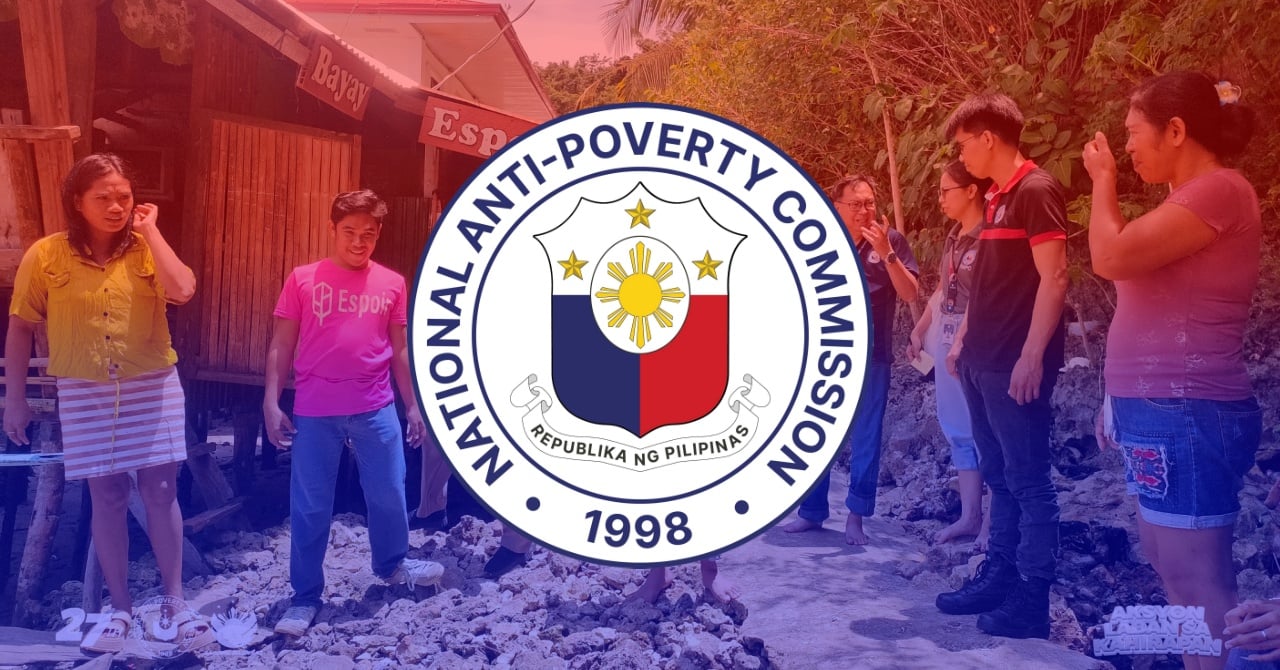Poverty remains one of the toughest challenges in the Philippines, and for decades, many have struggled to break free from it. To address this, the government created the National Anti-Poverty Commission (NAPC) under Republic Act No. 8425, also known as the Social Reform and Poverty Alleviation Act.
Since its establishment on June 30, 1998, the NAPC has been a central body ensuring that poverty reduction programs are not only implemented well but also inclusive of the voices of the poor.

Mandate and Role of the NAPC
At its core, NAPC serves as the coordinating and advisory body for the Social Reform Agenda (SRA). Its mission is to reduce inequality in Philippine society by making sure that programs reach the most marginalized. Among its main roles are:
- Coordinating poverty reduction strategies across national and local governments.
- Advising on pro-poor policies to ensure inclusive development.
- Institutionalizing sector participation so that the voices of farmers, fisherfolk, women, and other groups are heard.
- Monitoring and evaluating anti-poverty programs to ensure effectiveness.
Legal Basis of NAPC
The NAPC was created by Republic Act 8425 in 1998. Additional mandates came through:
- Executive Order 110 (2002): directing the People’s Credit and Finance Corporation to manage the People’s Development Trust Fund (PDTF).
- Administrative Order 21 (2011): reinforcing its oversight and coordination functions.
- Executive Order 67 (2018): transferring its supervision from the Office of the President to the Department of Social Welfare and Development (DSWD).
Organizational Structure
The President of the Philippines chairs the NAPC. It is supported by vice-chairpersons for both government and basic sectors. The agency includes:
- 25 government agencies working together on poverty reduction.
- 14 basic sectors represented in decision-making.
- A Secretariat led by the Lead Convenor (Secretary-General) who oversees operations.
Who Are the Basic Sectors Represented?
The NAPC recognizes 14 basic sectors as crucial partners in governance:
- Farmers and rural workers
- Artisanal fisherfolk
- Urban poor
- Indigenous peoples
- Workers in formal and informal labor
- Women
- Children and youth/students
- Senior citizens
- Persons with disabilities
- Victims of disasters
- Non-government organizations (NGOs)
- Cooperatives
This setup ensures that decision-making reflects the real needs of people on the ground.
Main Functions and Programs of NAPC
The NAPC’s functions go beyond coordination. It actively works to:
- Develop pro-poor policies and social reform programs.
- Institutionalize sectoral participation in governance.
- Collect and analyze poverty data for policy-making.
- Build capacities of local governments and communities.
- Promote microfinance services like the People’s Development Trust Fund.
- Strengthen local governments by giving support and incentives to LGUs implementing anti-poverty programs.
- Facilitate partnerships with NGOs, civil society, and international partners.
Its flagship programs focus on social protection, livelihood, human development, and local governance, with particular attention to the poorest municipalities and regions.
How Citizens Can Access NAPC Programs
Filipinos — especially from marginalized groups — can access NAPC programs through:
- Sectoral Participation: Joining assemblies or organizations that represent their sector.
- Local Governments: Coordinating with barangays, municipal or city offices that roll out programs.
- Direct Contact: Calling or emailing NAPC for information and referrals.
- Phone: (02) 426-5028
- Email: info@napc.gov.ph
- Website: napc.gov.ph
- NGO Partnerships: Working with cooperatives, NGOs, and civil society groups linked with NAPC.
- Community Consultations: Attending dialogues, forums, and public assemblies organized by NAPC.
Vision and Mission
The NAPC envisions a Philippines free from poverty and inequality. Its mission is clear: to push for policies, programs, and people’s participation that will uplift the lives of poor and marginalized Filipinos.
What Filipinos Say About NAPC
On social media and community forums, reactions to NAPC are mixed:
- Supportive voices highlight that NAPC’s inclusion of marginalized sectors is crucial. Farmers and fisherfolk often express appreciation for being represented.
- Skeptical voices question whether programs truly reach the grassroots, with some saying bureaucratic red tape slows down the process.
- Community leaders share that microfinance projects like PDTF have helped cooperatives, though scaling remains a challenge.
These perspectives reflect both the importance of NAPC and the need for consistent improvement in implementation.
Frequently Asked Questions
- What is the main role of NAPC?
It coordinates, advises, and monitors government poverty reduction programs to ensure inclusiveness and effectiveness. - Who can benefit from NAPC programs?
Marginalized groups such as farmers, fisherfolk, urban poor, women, children, PWDs, senior citizens, and disaster victims. - How do I join a sector represented by NAPC?
You can participate through recognized organizations or councils within your community or contact NAPC directly. - Does NAPC provide direct financial aid?
Not directly. It works through partner agencies, LGUs, and programs like the People’s Development Trust Fund for microfinance. - Where can I learn more about ongoing programs?
Check the official NAPC website or Facebook page, or inquire at your local LGU office.
Conclusion
The National Anti-Poverty Commission (NAPC) plays a vital role in ensuring that poverty reduction in the Philippines is not only a government agenda but also a people’s movement. By giving the marginalized a seat at the table, it pushes for meaningful reforms and inclusive growth. While challenges remain in program delivery, NAPC’s mandate continues to be a beacon of hope for millions of Filipinos striving for a better future.
